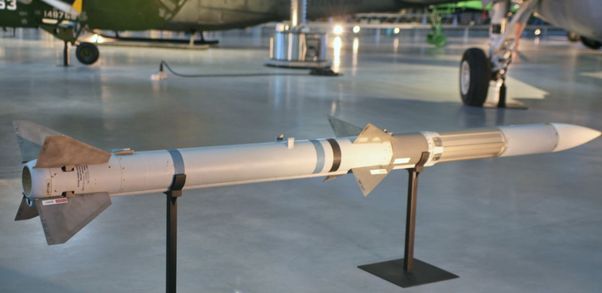Why is China building a fighter jet like the J-36 that's bigger than some bombers — what’s the game plan?
The J-36: Conceived from China's Military Fear
China's new sixth-generation jets, such as the J-36, do not come out of ambition but fear.
It began years ago with the PL-15 missile. When this missile downed a French Rafale during exercises in India, Western analysts were left stunned. Europe and the U.S. realized for the first time that their air-to-air missiles were no match for the PL-15. This weapon emerged from genuine concern.
I read once a memoir of a Chinese Air Force specialist. It told of how, ten years ago, the United States rolled out the AIM-120D, which had dual-pulse motors, real-time data link correction, a range of 200km, and a Mach 5 terminal velocity. The Chinese were surprised. They did not want to be left behind and rushed to create a competitor for the missile. This rush resulted in the development of the PL-15, which closely resembled the AIM-120D's claimed specifications.
Here's the surprise: the U.S. AIM-120D did not meet those lofty expectations. Development slow-downs and diminished performance resulted in the missile coming up short. Nevertheless, China's haste to keep pace with the AIM-120D had an unexpected payoff.
The same saga now propels the J-36 and J-50 programs. When the United States revealed its sixth-generation NGAD fighter years ago, China hadn't even completely perfected the fifth-gen J-20. With the U.S. deploying hundreds of F-22s and F-35s, NGAD appeared like science fiction technology to Chinese engineers. But fear of falling behind compelled China to start its own sixth-gen projects without a clear vision of what they would become.
China also copied an old American idea: "A shoots, B guides." A J-20 shoots a missile and then pulls back while an AWACS or other asset guides the missile to its target. This strategy swept Chinese simulations with 108–0 victories against conventional means. Consequently, older Chinese aircraft such as the J-10 and J-11 got fifth-gen radars and PL-15 missiles, transforming into the J-10C and J-16—planes that can attack from well beyond enemy defenses' range.
But worry still lingers.
Chinese experts were concerned: What if the U.S. shoots down their AWACS first with stealthy F-35s? They responded with developing anti-stealth radar. The next concern was: What if America has better anti-stealth technology already? The solution was to produce longer-range missiles, such as the PL-17, that can target 400km away.
In trials, the PL-17, under AWACS guidance, practiced shooting down an enemy AWACS at 500km range. But what if Americans also get equal weapons? Panic ensued further. They realized these big missiles are heavy and limited in numbers; stealth fighters cannot carry many. So, provided China deploys greater numbers of AWACS platforms than the U.S. possesses long-range missiles, they remain safe.
The second solution was to make drone AWACS; a minimum of three models are under testing.
But suppose the U.S. converts its RQ-4 drones into AWACS as well? China then needs to go one step ahead: install long-range missiles such as the PL-17 in stealth fighter bays.
This unease spurred the development of the J-36 and J-50—sixth-generation fighters with three engines, complete stealth, and B-2-sized bomb bays. The planes can carry several PL-17s without exposing themselves, in conjunction with AWACS and satellites to attack enemy targets from 700km out before retreating safely.
Anxiety still persisted: "Are we wasting these big bays carrying just missiles? What about new enemy missiles such as the AIM-174B?"
China tested the PL-21 in 2024 with an impressive range of more than 700km.
Their sixth-generation fighters now fly freely over cities, expressing muted confidence. Why conceal themselves when they know the U.S. AIM-120D never met its hype—and its AIM-260 and AIM-174B are just now gaining ground, encumbered by size and weight issues?
And what of America's NGAD? Still a "PowerPoint fighter." It was renamed the F-47, but it’s not a reality yet.
For years, China raced blindly, thinking they could never catch the U.S.—until one day they opened their eyes and found themselves in the lead.
But Chinese apprehension never disappears. I've interviewed individuals from numerous nations—Americans, Indians, Russians—and when I inquired regarding strength in the military, they smiled with pride. Indians assert, "We are strong, yet our leaders pilfer too much." Americans brag about incomparable power.
But the Chinese always tell the same: "We are too weak. Our military lags behind. The U.S. is a lot stronger."
No one you ask—students, elders, soldiers—is ever going to give the same answer. Their fear is deep.
And that's why the J-36 is only the start.







0 Comments